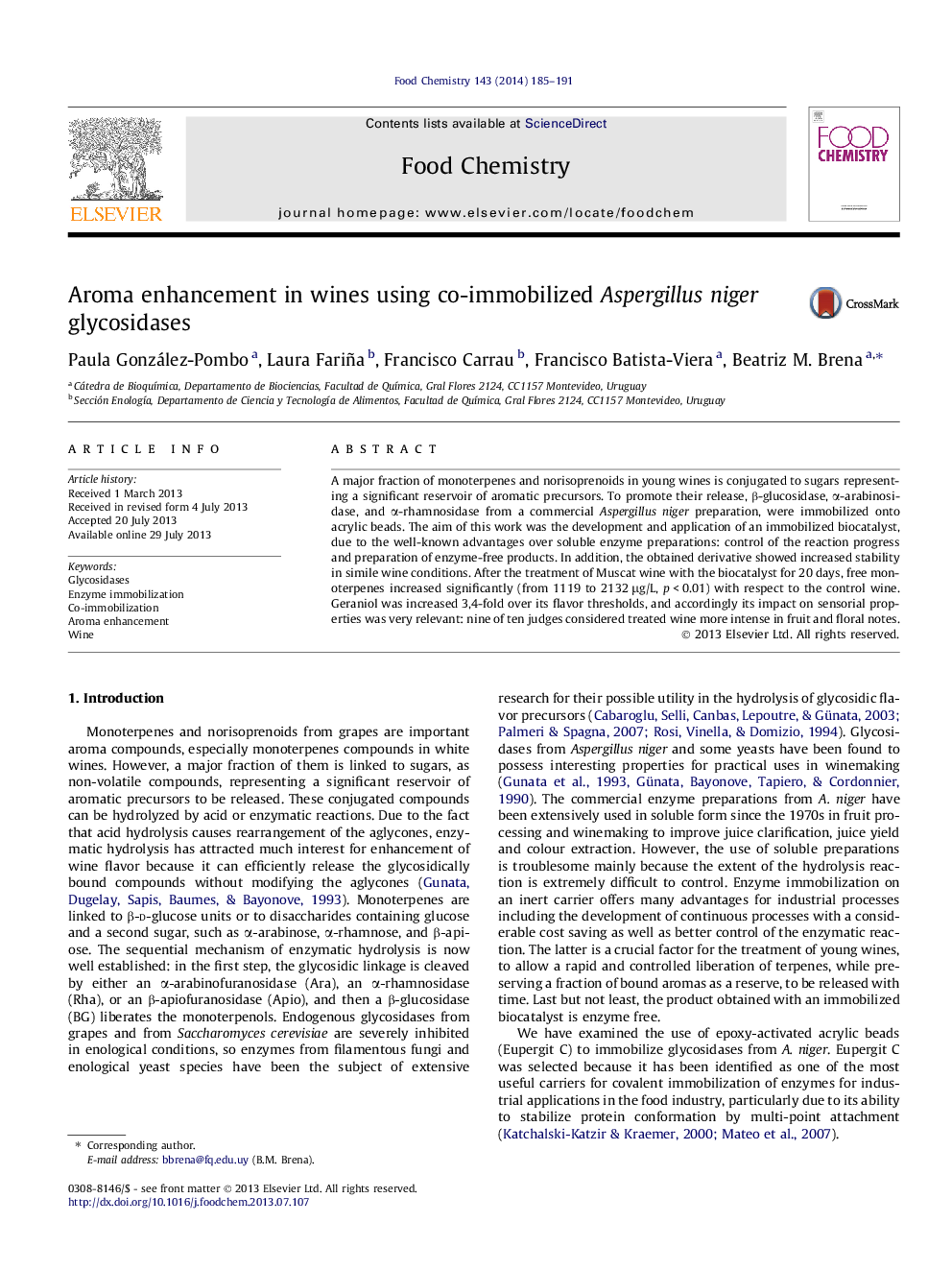| Article ID | Journal | Published Year | Pages | File Type |
|---|---|---|---|---|
| 7600637 | Food Chemistry | 2014 | 7 Pages |
Abstract
A major fraction of monoterpenes and norisoprenoids in young wines is conjugated to sugars representing a significant reservoir of aromatic precursors. To promote their release, β-glucosidase, α-arabinosidase, and α-rhamnosidase from a commercial Aspergillus niger preparation, were immobilized onto acrylic beads. The aim of this work was the development and application of an immobilized biocatalyst, due to the well-known advantages over soluble enzyme preparations: control of the reaction progress and preparation of enzyme-free products. In addition, the obtained derivative showed increased stability in simile wine conditions. After the treatment of Muscat wine with the biocatalyst for 20 days, free monoterpenes increased significantly (from 1119 to 2132 μg/L, p < 0.01) with respect to the control wine. Geraniol was increased 3,4-fold over its flavor thresholds, and accordingly its impact on sensorial properties was very relevant: nine of ten judges considered treated wine more intense in fruit and floral notes.
Related Topics
Physical Sciences and Engineering
Chemistry
Analytical Chemistry
Authors
Paula González-Pombo, Laura Fariña, Francisco Carrau, Francisco Batista-Viera, Beatriz M. Brena,
